What are the best celery juicers in 2024? This complete guide goes over the types of juicers, what to look for when choosing a juicer, and the top 10 best celery juicers in 2024 so that you can make an informed decision when making this important purchase!
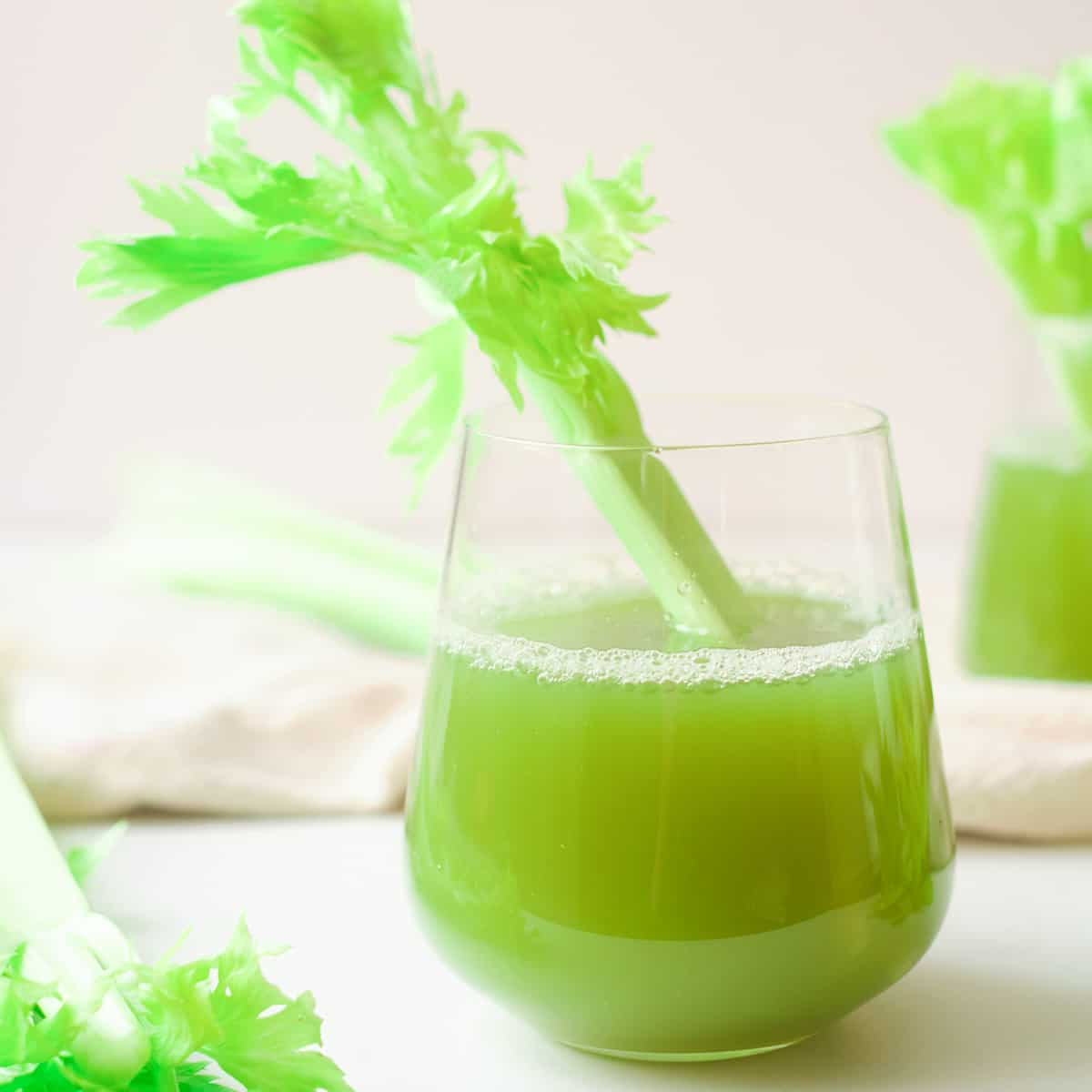
Jump to:
Finding the best juicer for celery is a tricky business! The challenge with celery is that extracting the juice is unlike other fruits or vegetables. It often gets stuck in juicers, or even when it gets processed through the juicer, the stalks continue to hold onto their juice.
However, if you’ve heard about the benefits of celery juice and want to try it, you’ll need the best juicer machine for the job! In this review, I go over the types of juicers, what to look for when making a purchase, and my top picks for the best celery juicers available from the most premium, the best budget, and my best overall pick!
Types of Juicers
There are five main types of juicers. They each have their benefits and downfalls. Before buying a juice extractor, it’s essential to know the various types and choose the one that fits your lifestyle and your preference regarding speed, motor, and quality of juice. A juicer is different from a blender. A juicer extracts the juice only, while a blender combines everything together to create a smoothie.
Centrifugal Juicers
An excellent juicer for beginners, centrifugal juicers work well with hard fruits and vegetables such as carrots, apples, and celery. They use a spinning blade to shred fruits and vegetables into pulp. A mesh screen is used to separate the juice from the pulp.
It is considered a quality entry-level juicer because it is more affordable than other types and creates juice much quicker. The downside with this type of juicer is that it uses oxidation during the process, which causes the juice to separate more efficiently and lowers its overall quality and nutritional content.
Masticating Juicers
A masticating juicer is also known as a cold-press juicer or slow juicer. These types of juicers use a corkscrew-like device to slowly crunch the fruit and vegetables up and squeeze the pulp against a strainer that separates the juice from the pulp.
The process is slow. However, the juice’s quality is better in terms of its flavor and nutritional content. It also produces more juice than a centrifugal juicer by nearly 30%. However, the challenge with these juicers is that they take more time to produce juice and come with a higher price tag.
Vertical Juicers
After understanding the juicing mechanism, between centrifugal and masticating juicers, the next thing to take a look at is horizontal versus vertical juicers. While centrifugal juicers produce quicker juice, the quality isn’t as high, and while masticating juicers produce more quality juice, their speed is rather slow.
Vertical masticating juicers give you the best of both worlds. They provide a higher quality juice than centrifugal but at a faster speed than masticating juicers. These types of juicers have a problematic time juicing leafy greens and are best for hard fruits and vegetables.
Horizontal Juicers
Horizontal masticating juicers are slower than vertical juicers and produce an even higher quality juice without oxidation. But the drawback is that it takes more time to make the juice. Horizontal juicers are best for leafy green vegetables like kale and spinach.
Twin Gear Juicers
Twin-gear juicers are similar to masticating juicers. However, they have a double-gear design. They have a high juice extraction efficiency and produce juice with the highest amount of nutrients. The two gears make the juice more quickly than other designs. While they produce faster juice with a higher nutrient density, these juicers come with a high price tag!
The 10 Best Celery Juicers in 2024
Without further ado, here are my top picks for the best celery juicers in 2023! Here you will find a product overview of each juicer, as well as the pros and cons of each one.
Best Overall: Omega J8006HDS
This slow masticating juicer comes in a mid-level price range. The juice yield is high quality. It does an excellent job of producing a dry pulp, which means you are getting the most juice from your produce possible! Its speed is 80 RPM, which is faster than most masticating juicers. It has a 15-year warranty, so you can rest assured that you are getting a superior product that will last a long time. This juicer is also relatively small and compact, so it’s perfect for smaller kitchens or those who want to put it away in a cupboard when not in use. The drawback of this particular juicer is that it has a small feed chute, so you will need to do more prepping and cutting of your celery to ensure it fits through the chute.
Pros:
- Compact Design
- Produces Quality Juice
- 80 RPM (faster than most)
- 15-year warranty
Cons:
- Small Chute
- More Expensive Than Other Brands
Best Budget: Ninja Juicer Pro
The Ninja line produces a juicer at a very affordable price. It’s an excellent choice for those beginning juicing and wanting to feel it out before investing in another appliance that won’t get much use. This is a centrifugal juicer. It has three pulp filters that allow you to choose how much pulp you want from no pulp, some pulp, and lots of pulp. All the pieces are dishwasher safe. However, some users complain there are too many parts to clean. The lower price point does come with less quality juice.
Pros:
- Compact Design
- Entry Level Price Point
- Quiet
- 150 Watt Motor
- 3 Pulp Filters
Cons:
- 1 Year Warranty
- Lots of Parts (Difficult to Clean)
- Less Quality Juice
- Small Chute
- Pulp Can Clog
Best Value: Aobosi Juicer
At a slightly higher price point than the Ninja, the Aobosi Juicer is a low-speed masticating juicer, meaning that the juice will be of higher quality but will take longer to produce. It has an 80 RPM motor and is very quiet. The speed is better than most, but not so fast that it degrades the quality of the juice. It produces dry pulp, which is excellent for celery and particularly difficult to juice. It’s much less expensive than most brands but has a quality product. A great overall investment for those beginning to juice.
Pros:
- Higher Quality Juice
- Entry Level Price Point
- Quiet Motor
- Produces Dry Pulp
- Lifelong Technical Support
Cons:
- Narrow Chute
- Wabbles If Produce Isn’t Cut Small
- Minimum Warranty
Best Premium: Kuvings EVO820
This vertical masticating juicer has a wide chute, making juicing much more manageable. It’s safe to use, too, with a safety mechanism to keep hands from hitting the blades. What sets this premium juicer apart is its different options depending on the type of fruit/vegetable you are juicing. For example, if you are juicing citrus fruits, it can turn into an electric citrus juicer.
Pros:
- Large Feeding Chute for easy cleanup
- High juice yield
- Safe to Use, the flap gate system keeps little hands from getting caught.
- Quiet
- BPA Free
- Stable Operation (no wobbling)
- Quality Juice
- Mix Juices
- It comes in Various Colors and Patterns
- Optional Citrus Module
Cons:
- Premium Price
- Not Dishwasher Safe
- Doesn’t Work Well for Leafy Greens
- Slow Speed
Best Vertical: Omega VSJ843QS
The benefit of using a vertical juicer is that it can save on counter space. The Omega has a compact design. The vertical design is also beneficial because gravity does most of the work when placing fruits and vegetables through the chute. This puts less stress on the machine, meaning it will last longer. The autocleaning system on this juicer is a big plus! It keeps the screen free of pulp while you juice. This means you get more juice and less pulp overall. It produces a dry pulp, perfect for celery, which means you get more juice! The drawback of this juicer is that it has a 43 RPM motor, which means it’s slow but produces quality juice without the threat of oxidation.
Pros:
- Dry Pulp
- Autocleaning System
- Compact Design
- Vertical Design
- Quality Juice
- Quiet
- 15-year Warranty
Cons:
- Slow
- Higher Price Point
Best Horizontal: Greenstar GSE-5000 Cold Press
This quality horizontal juicer is extremely powerful and could be used commercially. It juices all types of vegetables. In particular, it does an excellent job of juicing celery, leaving a dry pulp, and extracting the juice while retaining the nutrients. The stainless steel gears run at 110 RPM. Faster than many masticating juicers. The biggest drawback of this juicer is its price. It’s on the high end! It is also quite complicated to clean. This is fine if you are juicing all day, but if you are only making morning juice, this isn’t ideal.
Pros:
- Superior Design
- Faster than Other Masticating Juicers
- Quiet
- Produces Quality Juice
- Twin Gear Design
- 12-Year Warranty
Cons:
- High Price Tag
- Better for Commercial Use
- Difficult Clean-Up
Best Twin Gear: Greenstar Original Twin Gear Cold Press
Another quality Greenstar product, this twin-gear cold press juicer, is less expensive than the GSE-5000 but still on the higher end. It has a 110 RPM, producing quality juice in less time. Its versatile design lets you easily juice all fruits and vegetables, including celery. It produces a dehydrated pulp. The twin gears allow for a quality juice that doesn’t heat but produces in a fast time. It’s also quiet. The drawback is that this machine has a learning curve for assembling, cleaning, and using. It’s also more expensive than most of the juicers on this list.
Pros:
- Dry Pulp
- Fast Juicing
- No Heat Produced
- Nutrient Dense Juice
- 12-Year Warranty
- Quiet
Cons:
- Expensive
- Large takes up a lot of space
- Many Parts
- Difficult to Clean
Best Centrifugal: Breville JE98XL
This centrifugal juicer is also a vertical juicer, which means it’s fast and saves space! Its speed is 6,500 RPM and 12,000 RPM. The slower speed is best for soft fruits, while the high speed is excellent for dense vegetables such as celery. It has a wide chute, so you don’t have to cut and chop. It has other special features that set it apart, such as a wrap-around cord for easy storage, a central feed system, a froth separator, and BPA-free plastic.
Pros:
- Fast
- Wide Chute
- Dual Speed Motor
- Dishwasher Safe
- Continuous Juicing with External Pulp Collector
- Large Capacity Juice Jug
- Automatic Shut-Down Avoids Overheating
- Retractable Cord
- Compact Design
Cons:
- Fast Speed Yields Lower Quality Juice
- Produces Wet Pulp
- Not Good For Leafy Greens
Best Masticating: Omega MM900HDS
This juicer was made for juicing celery, making it an excellent choice! Similar in design to the J8006, it has a few key differences. It has a bigger chute, a larger and stronger screen for pulp, a more powerful motor, and BPA-free parts. However, it is a masticating juicer, which means it is slower but produces more nutrient-dense juice.
Pros:
- Perfect for celery juice!
- Produces Nutrient Dense Juice
- Dishwasher Safe Parts
- Quiet
- Continuous Juicing
- 15-Year Warranty
Cons:
- Not suitable for soft fruits
- Pulpy Juice may need to be strained further
- Slow
- Narrow Chute
- Mid-Range Price
- Large in Size
Best Compact: Hurom H101 Easy Clean Slow Juicer
The vertical design has fewer parts than many other juicers, making it compact, simple, and easy to clean. It works well with many different types of produce, including being ideal for celery stalks. While the parts to this juicer are not dishwasher safe, there are only a few, making it easy to hand wash. The quality of the juice this model makes puts it above many other vertical juicers. It has 43 RPM, so you get less foam and more nutrients. The lower RPM, however, comes with a slower juice time.
Pros:
- Compact Design
- Vertical Press
- Easy to Clean
- BPA FREE
- Produces Dry Pulp
- Quiet
- Produces Quality Nutrient Dense Juice
- 10-Year Warranty
Cons:
- Slow
- Not Dishwasher Safe
- Narrow Chute
Celery Juicers Buying Guide
Now that you’ve had a chance to review the top 10 best celery juicers, here are a few other considerations before making this important purchase.
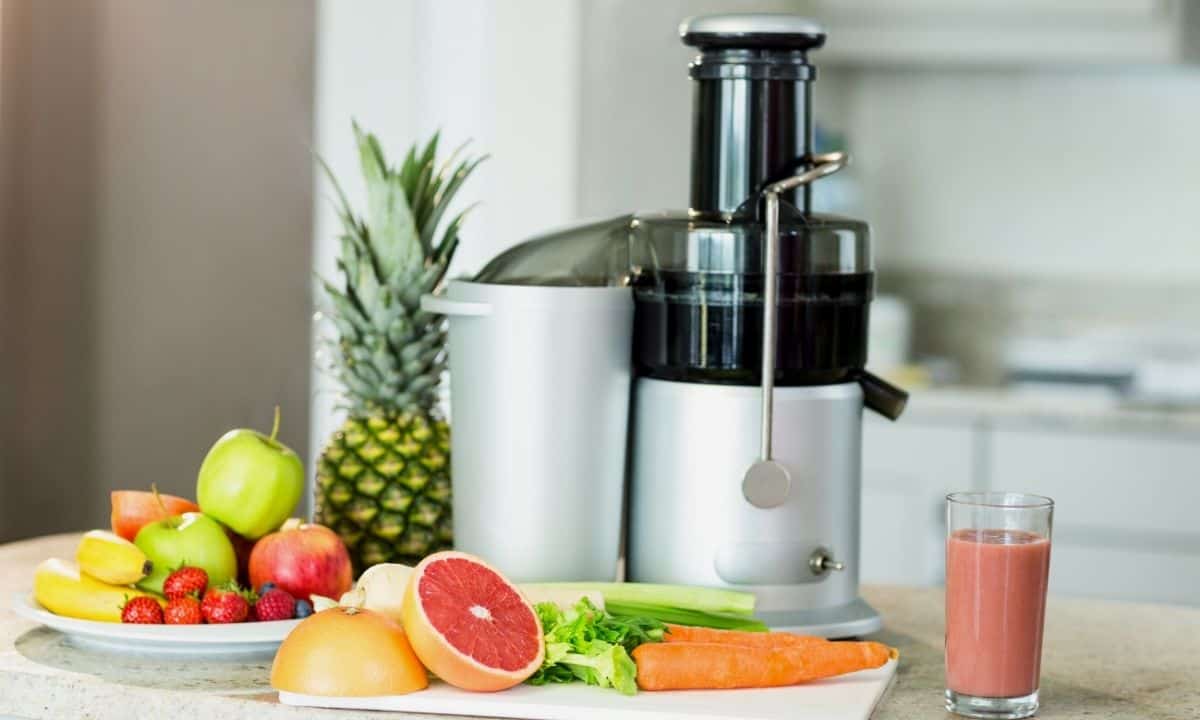
Efficiency
When it comes to buying a juicer, you want one that performs well. How do you know if your juicer is doing a good job? It’s all about the pulp and amount of juice. A juicer that produces dry pulp is extracting every last bit of juice from the fruits and vegetables, whereas a juicer that makes wet pulp isn’t doing a very good job. Look for a juicer that produces the dryest pulp possible. This is especially important when juicing celery because it is notorious for retaining its juice.
Speed
Of course, you want a juicer that works quickly. Most of us don’t have much time to wait while our juicer does its job. The challenge is that most fast juicers also produce wet pulp. The other challenge is that a fast juicer can heat up. As a result, the heat removes the nutrients from the fruits and vegetables. If you are taking the time to juice celery, you most likely are doing so for the health benefits, which will do you no good if your machine heats up your juice, causing it to lose nutrients. I recommend looking for a juicer with a high speed, but it doesn’t heat up. Go for a masticating juicer with a speed of 80-110 RPM. That way, you get the best of both worlds. Fast and nutritious!
Ease of Cleaning
If your juicer is difficult to clean, you’ll be less likely to use it, right? Machines with many different parts to take apart, clean, and put back together again are a pain! Look for a juicer that has fewer parts, and/or has dishwasher-safe parts. Many juicers come with a cleaning brush to help with cleaning.
Noise Level
What’s worse than a noisy juicer that wakes up the whole family? If noise concerns you because you have young kids, a roommate, or a loved one that you don’t want to wake up in the morning with your juicer, then look for one that is on the quieter side.
Yield and Nutrient Retention
As mentioned above, with efficiency and speed, the best juicer produces a dry pulp, which results in a higher juice yield and one that does not heat the juice so that you have higher nutrient retention.
Size
Depending on the size of your kitchen, counter space, or cabinets, you may want a smaller, more compact juicer. However, if the size is not a concern, buy the one that fits your other needs. Vertical juicers tend to be more compact, whereas horizontal juicers usually occupy more space.
Warranty
Look for a juicer with a good warranty. Some juicers mentioned above have anywhere from a 15-year to a 1-year warranty. Although the more expensive ones have a more extended warranty, you can rest assured that they are made with quality parts, and if anything happens to them, they will be replaced. If you think you’ll be juicing for the long haul, you will likely want a juicer with a longer warranty. Whereas, if you’re starting, you may choose a less expensive juicer at first and then later upgrade if anything happens to your original.
FAQS
Celery juice is full of vitamins and minerals with a high nutrition content. It has few calories, no fat, and is almost like drinking water, only with added vitamin C, vitamin K, vitamin A, natural sodium, iron, and magnesium. Juicing celery is even better than eating celery because you can get more nutrients from juicing. It’s far more difficult to eat an entire bunch of celery than to drink a glass of celery juice to gain the same amount of nutrients.
It has quite a bitter taste. To make it taste better, juice an apple, orange, carrot, or cucumber to reduce the bitterness. But if you want the most nutritional benefits, it’s best to limit the ingredients or drink it without any added fruits or vegetables.
Typically, you will need one bunch of celery to yield 12-16 ounces of juice.
Blending celery combines pulp, fiber, and juice. Juicing removes the pulp and fibers, leaving you with only the juice.
This will depend on the type of juicer and the freshness of the celery you use. Typically, celery juice lasts 3-7 days in the refrigerator when stored in an airtight container.
The recommended amount of celery juice to drink each day is 16 ounces. It’s best to drink it first thing in the morning and wait about 30 minutes before eating breakfast or having anything else to drink except water.
It is possible to drink too much celery juice. If you drink more than the recommended amount each day, you could have some uncomfortable gastrointestinal issues.
Final Thoughts
When choosing the best celery juicer, there are many factors to consider. The best celery juicer for you depends on your specific needs and how you plan to use your juicer.
More Product Guides!
Please comment below if you found this article helpful or have any additional questions. You can also follow me on Instagram, Pinterest, and Facebook for more family-friendly vegan recipes!


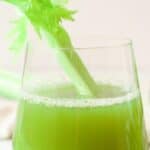
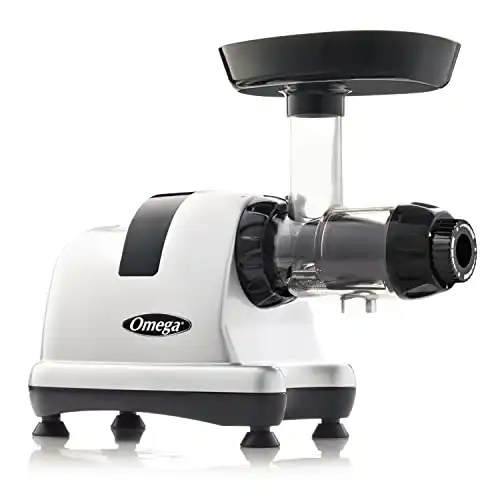
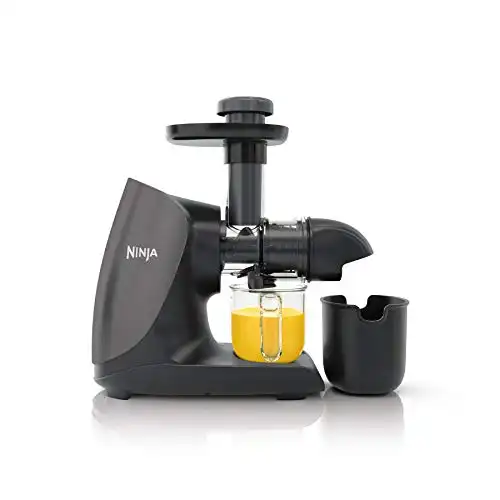
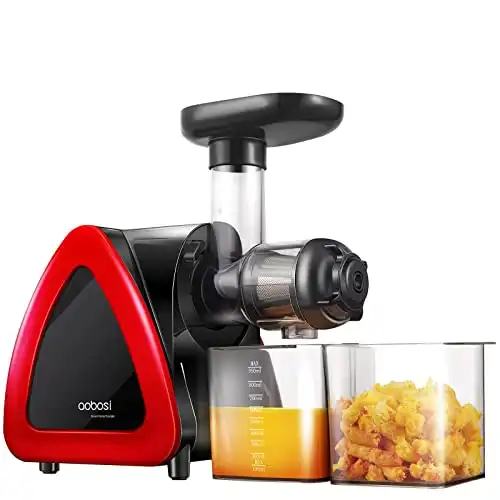
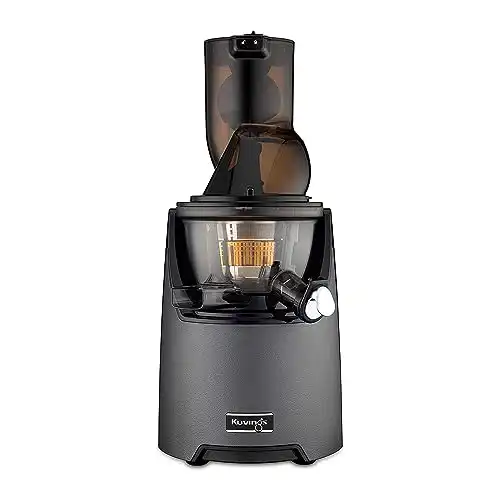
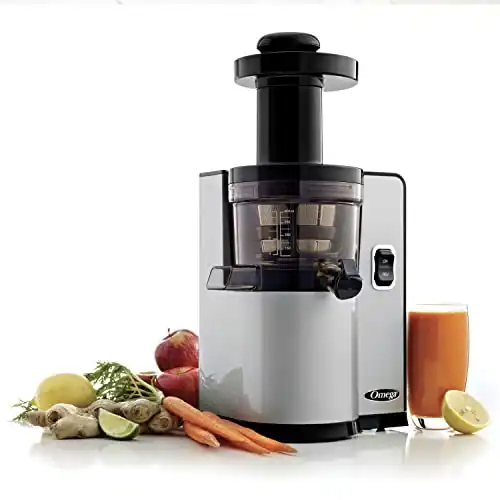
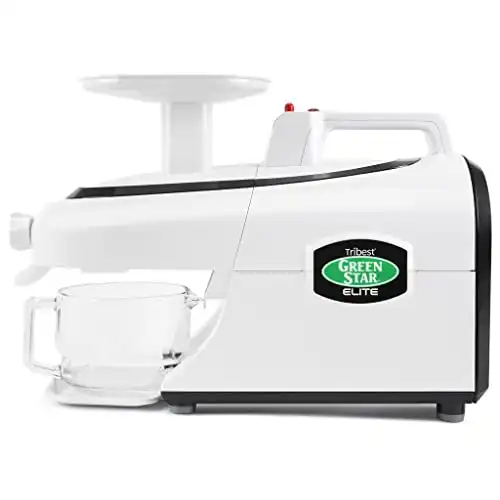
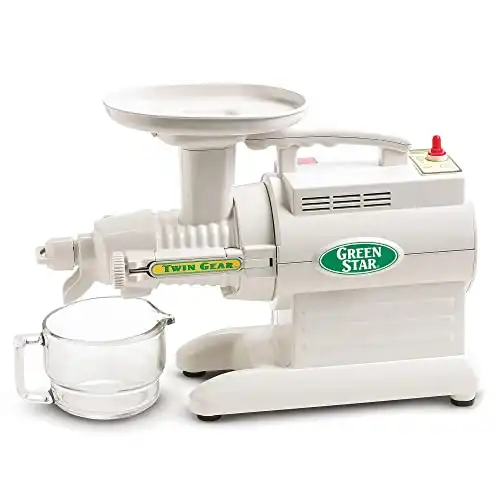
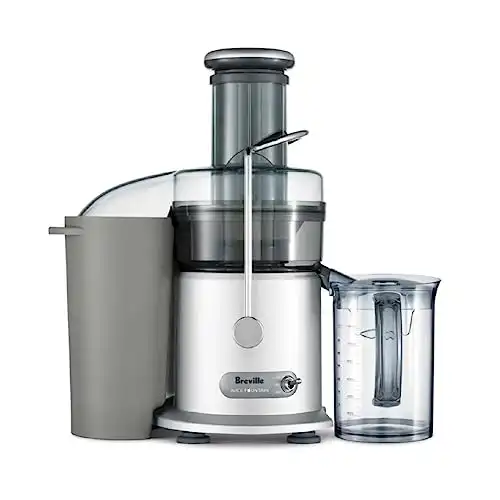
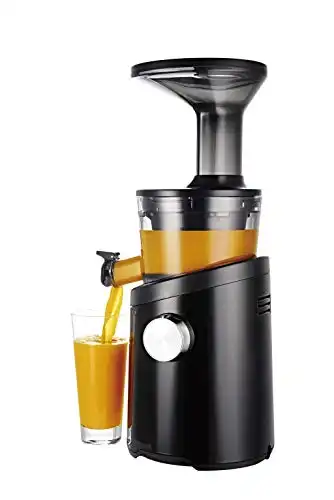


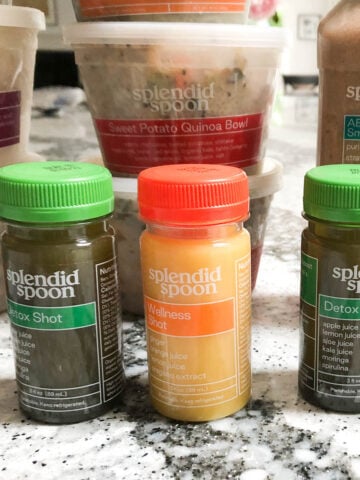
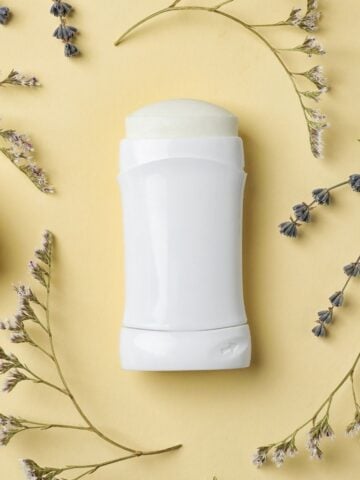
Leave a Reply